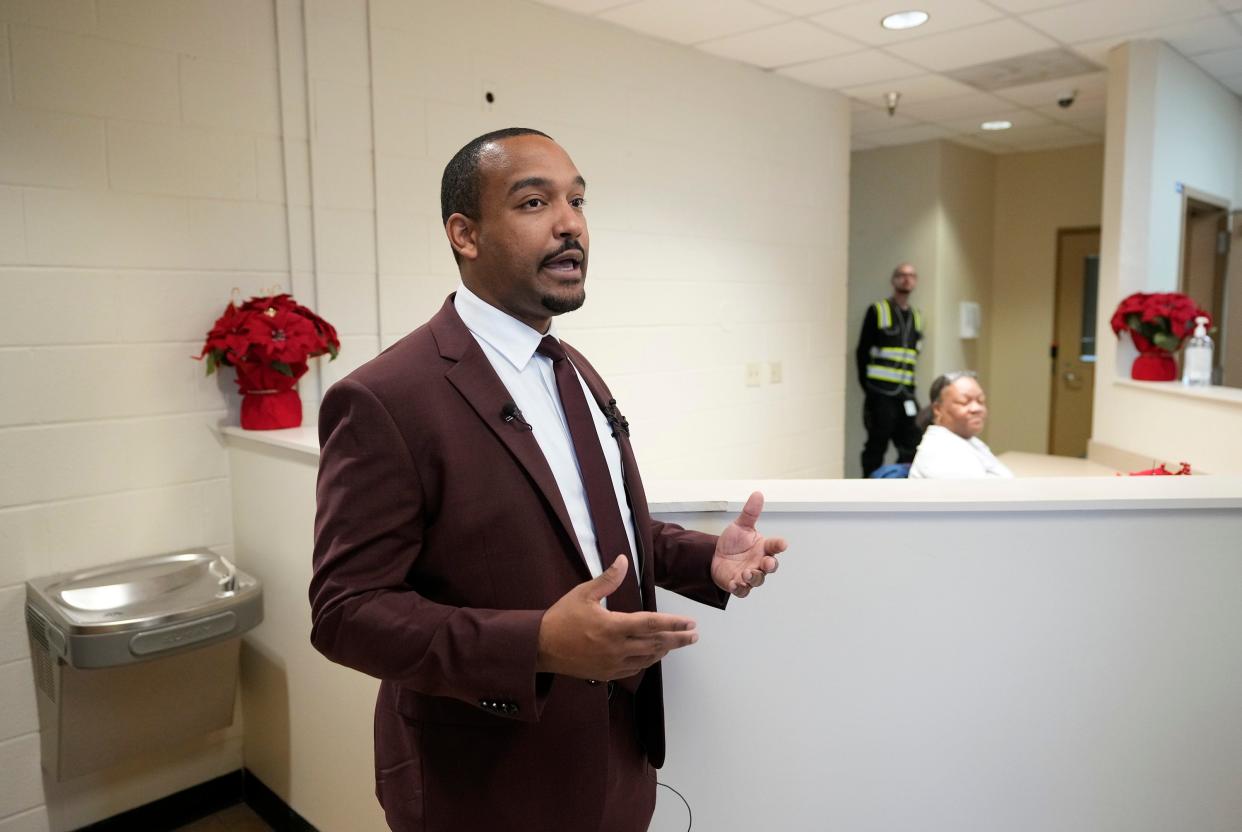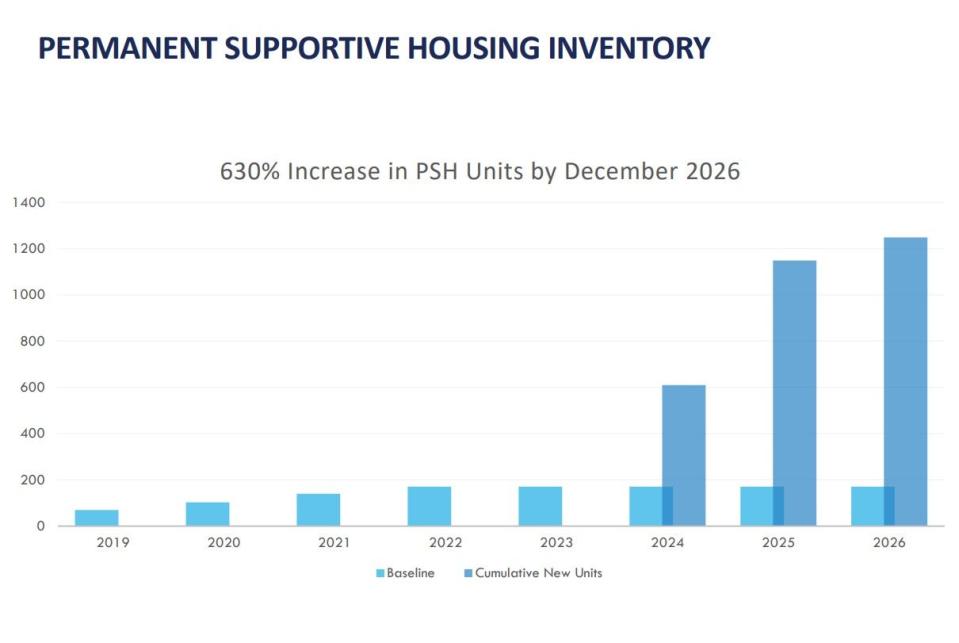Austin increases bed capacity for individuals experiencing homelessness. See the new data.

The city of Austin is making progress toward filling the gap of critical permanent supportive housing units and emergency shelter beds to serve the city's homeless population, city leaders said this week.
Shelter bed capacity has increased, the city is serving a record number of individuals experiencing homelessness in its shelters, and there are 1,000 new permanent supportive housing units estimated to be constructed by the end of 2026, according to a presentation Tuesday by city Homeless Strategy Officer David Gray and Jamey May with the Housing Department.
As progress has been made, there is still work to be done to close the gap in shelter beds and permanent supportive housing units for the homeless population, which has nearly doubled in Austin since January 2022.
Data provided to the American-Statesman in December by ECHO, the Ending Community Homelessness Coalition, showed that while, there have been increases, Austin has trailed behind other Texas metro areas and large cities nationwide in overall shelter bed capacity for years.
"The fact of the matter is we don't have the luxury of choosing if we want to go all in on more shelter or all in on more housing," Gray said. "We need both."
Here's what has changed, according to the new city data:
How many people experienced homelessness in Austin in 2023?
In the Austin area, in October 2023, 5,530 people were experiencing unsheltered homelessness and 1,153 were experiencing sheltered homelessness, according to data presented to the Austin City Council on Tuesday. Gray said a lot of the information presented came from ECHO.
In January 2022, 873 people were experiencing sheltered homelessness and 2,374 people were experiencing unsheltered homelessness, according to ECHO.
Shelter bed availability in Austin
Data presented in July 2023 showed that Austin had 880 total shelter beds. It was estimated that an additional 717 beds would be needed to keep up with the projected demand by 2025.
That gap has since lowered to around 615 beds.
The number of permanent shelter beds, according to Tuesday's data, is now 1,075, excluding the 300 temporary beds at the Marshalling Yard.

Some of the shelter beds that have not yet become available, but are in development, include 85 new beds at the Eighth Street Shelter, which was opened by the city in December, and 115 new beds at the Esperanza Community. The 615 beds needed by 2025 are in addition to these 200 beds.
More: TxDOT announces expansion of homeless Esperanza Community ahead of I-35 construction
Additionally, as of January, there were 1,168 rapid rehousing units and 346 transitional housing beds in Austin.
Permanent supportive housing availability in Austin
As of January, there were 1,718 permanent supportive housing units in Austin. The number of units is estimated to grow more than 300% this calendar year, according to the data presented Tuesday.

The city is also estimating that about 1,000 new permanent supportive housing units are to be constructed by the end of 2026.
Exiting from emergency shelters, by the data
Data presented Tuesday show that individuals exiting from emergency shelters in Austin are heading to several locations:
37% are exiting to rapid rehousing.
22% are exiting into unsheltered homelessness or other institutions including jails, hospitals or inpatient treatment facilities.
20% are "positive" shelter exits. Gray said positive shelter "could be somebody exiting into another housing opportunity, maybe reuniting with family, being successfully diverted, etc."
18% are exiting to unknown destinations.
3% are exiting to permanent supportive housing.
Data from 2022, which was presented to the City Council in July 2023, showed:
37% exited to rapid rehousing.
31% exited to an unknown destination.
16% exited to "other housing."
12% exited to unsheltered homelessness or other institutions.
4% exited to permanent supportive housing.
Data provided to the Statesman by ECHO showed that Austin has one of the highest percentage of people exiting to stable housing in the country, outranking several large metro areas in Texas and the country.
This article originally appeared on Austin American-Statesman: Austin is making progress on increasing bed capacity for homeless

